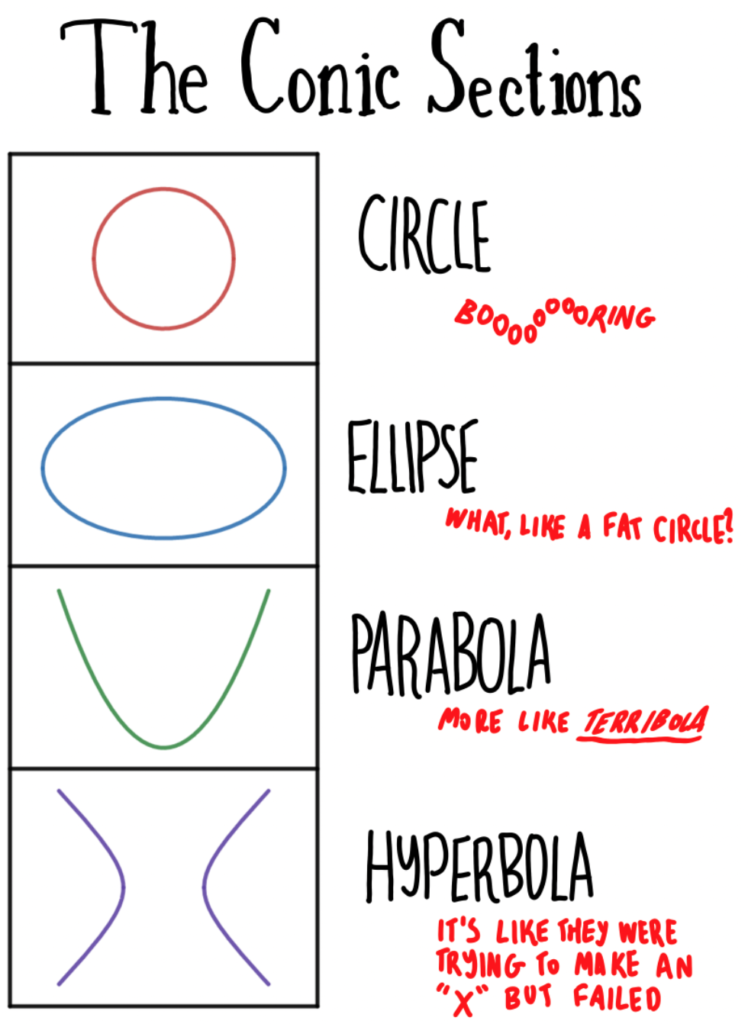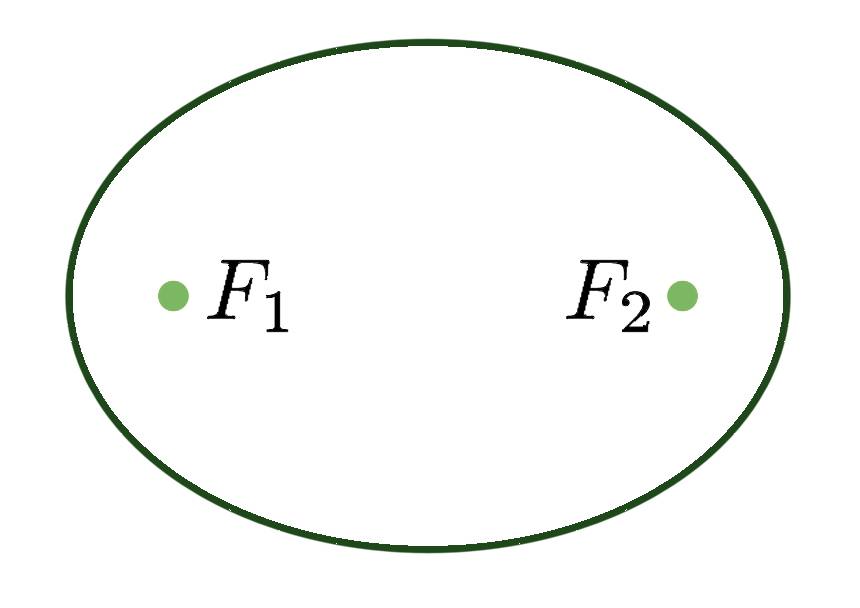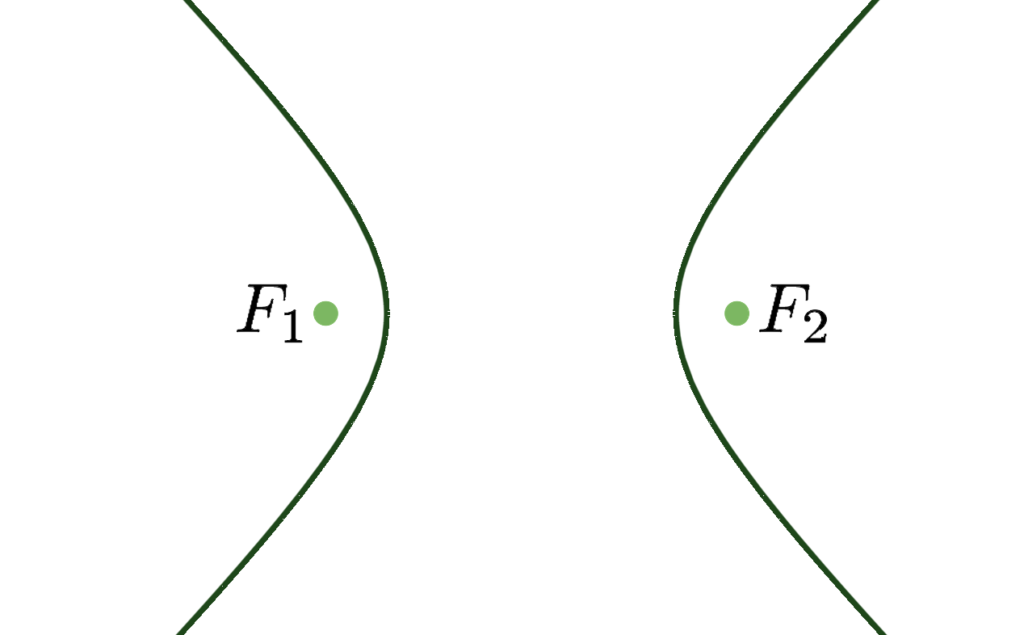Following are the conic sections. (They are created by slicing up two cones, hence the name.) I have taken the liberty of annotating them:

Okay, so obviously they’re a lot more interesting than you may be led to believe.1I feel duty-bound to note, however, that ellipses are indeed just fat circles.
Hey, want to know something neat? Ellipses are very similar to hyperbolas. No, they really are. Play around with this:
What you were just sliding was the eccentricity of the figure. This eccentricity can be defined in numerous ways, from the simple to the obfuscatingly complex. We’ll define it a bit later, but just keep in mind for now the relationship between ellipses and hyperbolas, or at least that such a relationship exists.
We’ll start here: what exactly is a hyperbola? Well, there are a lot of ways to define it, just like eccentricity. (Multiple definitions does become a recurring theme here.) We’ll start with the fact that it is a conic section, i.e., if you cut through a cone, you might get a hyperbola, depending on how you cut it.
But we can get more fundamental than that. Take two points in space. These are our foci (singular: focus). Now, we can make an ellipse or a hyperbola with these two foci. We’ll start with the ellipse. The ellipse is the set of all points where the combined distance to the foci is a constant. (This constant itself is named a, for no particular reason.)

Now, the hyperbola is defined similarly, but instead of being defined by the combined distance to the foci being constant, it’s defined by the difference between the two distances to the foci being constant.

Okay, time to look at more hyperbola stuff. The center of the hyperbola is simply the midpoint between the foci, and is notated . (The two foci are and .) There are two vertices, and , on the hyperbola, which are the only two points at distance a from the center.

The distance between and either of the foci is (sometimes called the linear eccentricity), and the ratio is the eccentricity . This can be defined in a similar manner for ellipses, the one major difference being that the center is called :

As you can see, is bigger than in a hyperbola but smaller in an ellipse. What this means is that the eccentricity is greater than 1 in a hyperbola but less than 1 in an ellipse. This prompts the obvious question: what happens when ?
That would mean would be equal to . Which would mean the foci would be on the vertices. When we do that, we get this:

We could go with this. However, we could also salvage this by using the time-honored technique of looking for a new definition, this time the one of “eccentricity”.
Find out why parabolas have an eccentricity of 1 in part two!